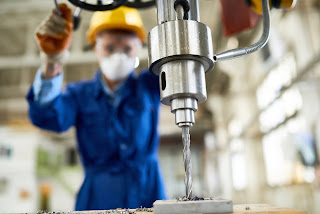Enhancing Your Woodworking Projects with a Wood Cutting Machine
Woodworking is an art that combines creativity and precision, transforming raw wood into beautiful and functional pieces. At the heart of this craft is the wood cutting machine, a versatile tool that can significantly enhance your efficiency and accuracy. Whether you're a professional carpenter or a hobbyist, understanding the capabilities and benefits of a wood cutting machine can elevate your projects to new heights.
The Versatility of Wood Cutting Machines
Wood
cutting machines come in various types, each designed to perform specific tasks
with precision. From table saws and band saws to jigsaws and circular saws,
these machines cater to a wide range of cutting needs. Table saws are ideal for
making straight cuts, while band saws are perfect for curved and intricate
cuts. Jigsaws offer flexibility for detailed work, and circular saws are great
for quick, straight cuts. By choosing the right wood cutting machine for your
project, you can achieve the desired results with ease.
Precision and Efficiency
One
of the primary advantages of using a wood cutting machine is the precision it
offers. Manual cutting can be inconsistent, leading to errors and wasted
material. Wood cutting machines, on the other hand, ensure accurate cuts every
time, reducing waste and saving time. For instance, a table saw can make
uniform, straight cuts quickly, allowing you to focus on assembly and
finishing. The efficiency gained from using these machines can streamline your
workflow and enhance the quality of your work.
Safety Features and Best Practices
Modern
wood cutting machines come equipped with safety features that protect users
from accidents. Blade guards, riving knives, and anti-kickback pawls are common
safety components that help prevent injuries. Additionally, many machines offer
dust collection systems that keep your workspace clean and reduce the risk of
respiratory issues. It's essential to familiarize yourself with these features
and follow best practices, such as wearing protective gear and maintaining a
tidy work area, to ensure safe operation.
Choosing the Right Machine
Selecting
the right wood cutting machine depends on your specific needs and the nature of
your projects. For large-scale woodworking, a heavy-duty table saw or a panel
saw might be necessary. For smaller, detailed work, a scroll saw or jigsaw
could be more appropriate. Consider the types of cuts you'll be making, the
materials you'll be working with, and the space available in your workshop.
Investing in a high-quality machine that suits your requirements will pay off
in the long run, providing reliable performance and durability.
Maintenance and Longevity
To
keep your wood cutting
machine
in optimal condition, regular maintenance is crucial. This includes cleaning
the machine after use, lubricating moving parts, and checking for wear and
tear. Sharpening or replacing blades as needed will ensure clean cuts and
reduce strain on the motor. By taking care of your machine, you can extend its
lifespan and maintain its performance, allowing you to continue creating
high-quality woodworking projects.
A
wood cutting machine is an indispensable tool for any woodworker, offering
precision, efficiency, and versatility. By understanding the different types of
machines available and selecting the right one for your needs, you can enhance
the quality and productivity of your woodworking projects. Prioritizing safety
and regular maintenance will ensure that your machine operates smoothly and
lasts for years to come. Embrace the power of a wood cutting machine and take
your craftsmanship to the next level.





Comments
Post a Comment